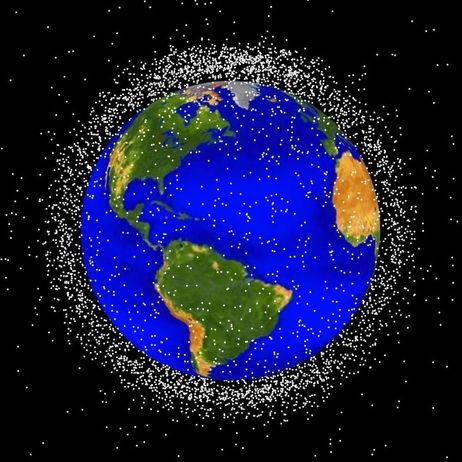Roaming Dragon: Experts fear China launched a secret satellite-destroying robot weapon into space
The AoLong-1 is tasked with clearing space debris but some think it will form a swarm of military robots.
China has just launched a robotic spacecraft into orbit with the intention to clean up man-made space debris and collect old, defunct satellites circling our planet. Or so the Chinese government claims. Some experts believe the small craft could be a space weapon that could be used by China's military to destroy enemy satellites.
The AoLong-1, also known as Roaming Dragon, was blasted from Southern China on 25 June in what is described as the first of a number of craft equipped with a robotic arm and a mission to spring clean the swathes of space junk in the Earth's orbit. It works by grabbing chunks of debris and crashes back to Earth in a safe location like the ocean – the idea being that it could prevent any large objects from crashing into major cities.
After China's government blew up an out-of-service weather satellite back in 2007 – and millions of shards of debris were sent scattering – it resulted in outrage among international space agencies. This world-first initiative is sending out a message that China is doing its bit to clean up.
China, as a responsible big country, has committed to the control and reduction of space debris. In order to fulfil the obligations and responsibilities, our country is [working endlessly towards] achieving a technological breakthrough in space debris removal technology," Tang says on the website of the China National Space Administration.
Or is it? According to the South China Morning Post, experts believe the Roaming Dragon could also serve as a military weapon that could take out enemy satellites in time of war.
A researcher with the National Astronomical Observatories in Beijing claims the job to clear space junk is so monumental and so complex it has raised scepticism as to whether the robot has an ulterior motive.

The researcher claims the Roaming Dragon has "potential as an anti-satellite weapon that, during wartime, could be used as deterrents or directly against enemy assets in space". Being small, lightweight and simple to launch the report states China could fill space with a swarm of the robots – great if they are there to sweep up debris that can damage operating satellites and the International Space Station, a worrying thought should they be used otherwise.
Space engineering experts cited further in the article, raising eyebrows. One source claimed "the development of the technology was mainly supported by the military, and kept confidential" posing questions as to what the military's interest in a 'cleaning spacecraft' would be. Others question the sophistication required of technology to be effective. The precision of the robotic arm would have to be so exact that doubt has arisen as to whether it would be capable of clearing any debris. "To get a firm grip, the arm must aim for a specific target area – something that in space is likely to be constantly changing," said the South China Morning Post.
There has been no confirmation or denial from China over experts' claims but the notion is sure to spark a scenario of 'whatever you can do, we can too' mentality from the US, Russian and European space agencies. The ESA is already planning a space debris clearing project scheduled for 2023, and Darpa is also launching a multi-tasking craft called the Phoenix in 2020. Star wars? We'll just have to keep our eyes on the sky
© Copyright IBTimes 2025. All rights reserved.






















